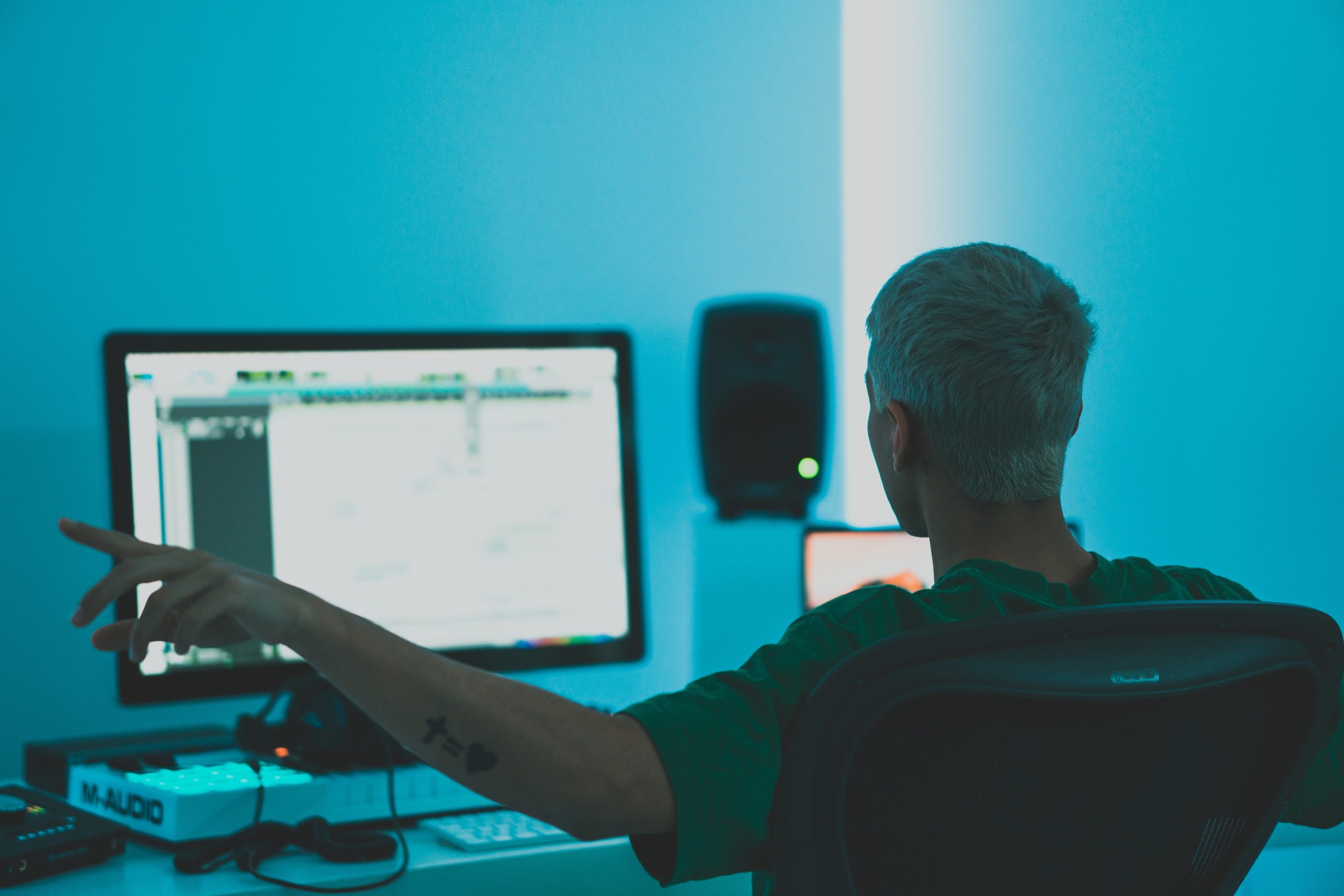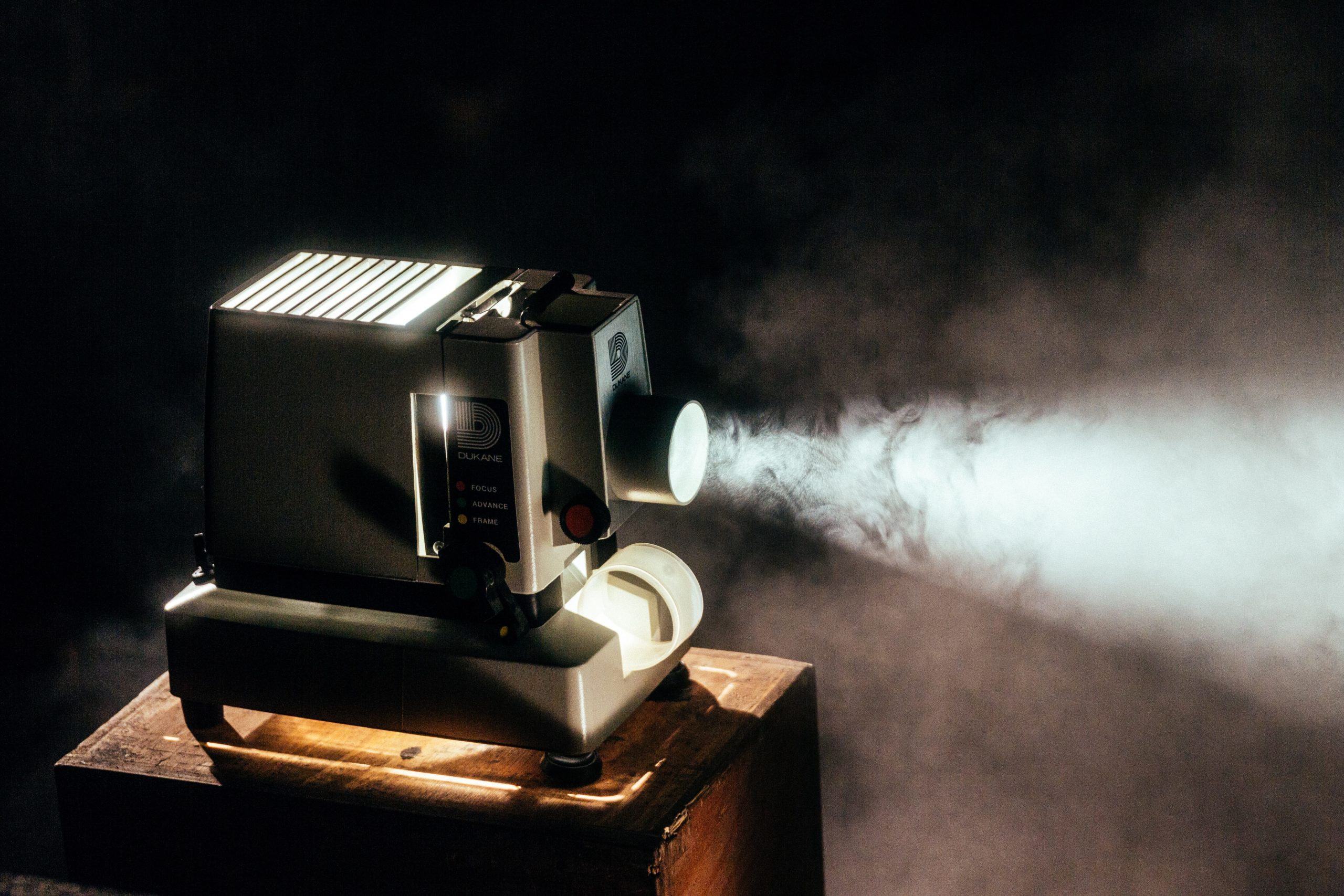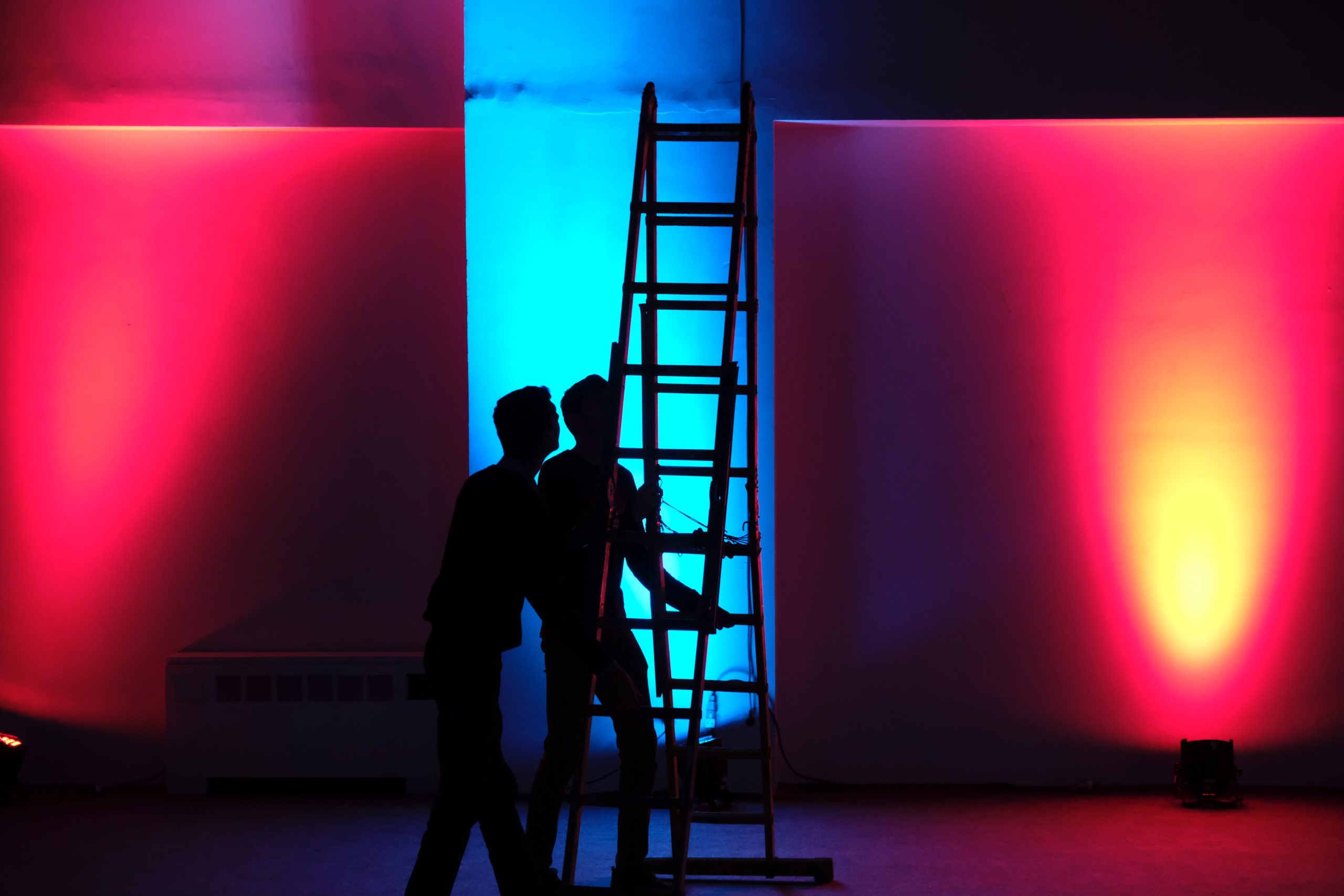There are so many AV labor positions out there, so if you’re finding yourself feeling confused when looking at AV quotes, don’t fret. In today’s Whiteboard Wednesday, Will Curran will be discussing the major AV labor positions and how they relate to your event.
This is a great crash course on AV labor positions. It’s important to note, however, that they all wildly depend on the size and the content of your event. Sometimes, they same person can assume two roles in the course of the entire event. But let’s not get ahead of ourselves – let’s start at the beginning!

Producer
The producer represents the largest and the most expensive role at events. The producer is in charge of the content and the overall vision of the event. They’re usually also managing everybody below them. They’re usually the ones working with the talent and scriptwriting. They’re also working with the technical director to essentially try to figure out how they can take what you’re trying to do and bring it 100% to life from a creative standpoint. You’ll see producers with a lot of entertainment companies and a bigger general sessions and theatrical events.
Assistant Producer
As the name suggests, assistant producer assists the producer and is sometimes referred to as AP. They might be getting their hands a little bit more dirty, working with the technical side or working on graphics and scriptwriting.
Stage Manager
The stage manager relates directly to the event’s content. They are usually someone backstage that is managing what’s going on on the stage. They’re the ones pushing the talent out to make sure that they get out there in time. That’s why they’re typically big on timing, making sure everything runs on schedule, making sure that people are in the right place at the right time. While stage manager is in the back, show-callers are at the front. Sometimes, they can be the same person as well.
Show-caller is usually a position that is put at the tech table at the front of the room. They’re usually there with a headset on, calling the commands in the whole show. They’re the ones saying, “in five minutes we’re gonna go into this”, or “lighting cue 52, go”, or “now send the CEO out”. They’re the ones making sure everything happens on schedule and happens on time, and that the right things happen at the right time.
 Technical Director
Technical Director
Technical director has more of a managerial position. For larger events, when you start to get a lot of technicians working down here, you need someone to overall direct the entire technical side of things. Technical directors are usually working with vendors and with the show’s engineers and AV labor. They’re making sure everything technically goes perfect.
Production Manager
Production managers usually come for bigger shows, where there are a lot of breakout rooms or there are a lot of external things beyond just one single room. They are in charge of making sure that the equipment gets there at the right times and that sets are being built. Usually, they’re working physically with the equipment and managing lots of areas. They’re overseeing the entire production for the entire event.
Production Assistant (PA)
It takes a big crew to oversee an event and somebody needs to take care of all of them. That’s where a production assistant comes in, also known as a PA or a runner. They’re running to grab food, coffee, or respond to any last minute requests from the client. It all depends on your event.
 Video AV Labor Positions
Video AV Labor Positions
Video Engineer (V1)
Video is one of the most complex areas when it comes to AV labor positions. It usually has a lot of equipment, so it takes a lot of people to make it all work. A video engineer is the one who is managing all the video. They’re usually also managing entire departments, looking at the entire vision when it comes directly to video. They’re overseeing everything from the projectors, cameras, the audio being sent out of the video, the graphics. Anything that touches video, a video engineer’s managing that portion. Typically, the video engineer is the person who’s running the switcher.
The switcher is where you take in things like multiple laptops, cameras, etc., and you need to switch between them to manage what’s going up on the screen. They understand where everything’s going, what needs to happen. A lot of times, they are also the ones calling the cameras. They all have headsets on and will usually be on their own channel, saying, “I’m coming to you, camera one” or “can you get a tighter shot on this person?”
Video Technician (V2)
Similar to a video engineer, video techs are also usually a little bit higher up in the chain. Usually, the video technician does a couple different things. Primarily, they’re controlling the cameras and all the settings that go with the camera. So for example, they’re doing the so-called shading. Saying things like “we need to bring up the brightness and the contrast”, they change settings in real time, making sure the cameras look perfect. They need to be mobile, so they can get up and go make sure that’s something working right.
Camera Operator
A camera operator is the person who is running the cameras. Depending on how many cameras you have, you usually have a camera operator for each one.
Teleprompter Operator
A teleprompter operator is the person who is running those screens you see whenever a president is giving an address, and they have those clear pieces of glass with all the text and their speech. This person also usually helps the main presenter work with their scripting and making sure that it’s written the way they want it to be, and that it has spaces where they want it.
Graphics Operator & Playback Operator
The graphics operator and the playback operator are similar positions, yet slightly different. Corporate events typically have presentations. Graphics operator is the person who’s running the presentations, including PowerPoint presentations.
You might be thinking to yourself, “I have a clicker. Why do I need a graphics operator?” But when you need to make a lot changes to your presentation last-minute or there are a lot of slides that need to be made, they come in handy. After all, the graphics operator’s training is in Photoshop and PowerPoint.
If your event has a lot of video content, you are going to have a playback operator. This is someone who runs a system that just runs video content, especially for those more complex video setups where you have multiple projectors or you want to show one video on one screen and another video on another screen.
Projectionist
If there are more than four projectors at your event, a projectionist is brought in. For example, if you have a 30×10 ft screen, you should be using multiple projectors, not just shooting one projector and making it really wide. In such cases, you’re usually taking two projectors and blending the middle of the section to make it look like one seamless projection. Additionally, many high-end projections will also need back up projectors, so you’ll have projectors stacked on top of one other.
A projectionist is there to help you blend it all together and make sure that the projectors are running perfectly. All it takes is one subtle shift, and the projectors don’t look as good. Especially when you’re spending a lot of money on projection, you want to make sure you have a projectionist.
You might have a projectionist just for the load-in, and then that person converts to being the graphics operator during the actual show or maybe they become the V2. The V1 might act as a projectionist as well, depending on how much workload they have and how big the setup is. In these particular AV positions, people can sometimes move around based on what their expertise is.
Spyder or Encore Operator
Encore and Spyder are two different brands of video switching systems. Because these systems are so complex, they usually require someone who’s certified in utilizing the system, somebody who’s taken classes, that knows every little feature, and how everything works. A Spyder operator or an Encore operator essentially manages the switching. Sometimes you might also have someone who’s in charge of switching just the cameras and the Spyder operator is doing just the screens.
 Audio AV Labor Positions
Audio AV Labor Positions
Audio Engineer
Similar to the V1, audio engineers are in charge of all the audio-related things, making sure that it sounds absolutely amazing in the room. They’re tuning the room, making sure that there’s no feedback and that the audio plays at the right volumes.
When the CEO comes out, they’re the ones bringing up the audio to make sure that everything sounds great. Sometimes, you’ll have a secondary A1 as well, someone to the side of the stage, for example, if you have a band and you need them to mix all their in-ear systems.
Audio Technician
Audio technicians are mobile and they can be seen running around a lot, making sure the guitarist has all their wires hooked up the right way, for example. In most corporate events, the audio technician helps make sure all the lapel mikes are set up the right way and explain to speakers how to hold them. They might be the one who hands them the clicker as well. They are usually the last person that the speakers will see before they go onstage.
Lighting Positions
Lighting Designer (L1)
Lighting designers oversee the entire board when it comes to lighting, choosing the colors and deciding where the positions of the lights go.
Lighting System Technician (L2)
The lighting system technician is usually the person who is making sure that they’re in the right positions. Similar to them, but not quite the same, are the master electricians. They are in charge of all the electricity for the event. This is one of those positions that even though it’s under lighting, it actually affects everybody. They’re the ones deciding what outlets that the audio is going to go into and what outlets the video team’s going to use. The master electrician usually assists the lighting technician, making sure that all lights are being plugged in the right outlets.
Follow Spot Operator
If you have a spotlight, you need someone to operate the spotlight and point to where it goes. That’s the follow spot operator’s job.
 Other AV Labor Positions
Other AV Labor Positions
Besides these three major AV groups, there are usually also labor positions that are only at the event for setup and tear-down.
Stagehands
A stagehand is a person who helps build everything and put the set together. They are usually a little bit less knowledgeable in understanding the technical side of things. That’s why they’re not engineers or technicians, but they understand basic things like putting metal trusses together and hooking in cables. Typically, there are a lot of stagehands around prior to the event.
Crew Chief
Many times, the crew chief won’t be listed on your AV quote because they are another stagehand, but they manage the entire crew. Sometimes, technicians or managers can act as crew chiefs. However, with the crew chief, their sole responsibility is to make sure everyone shows up on time, that they’re getting their breaks, and that their time is clocked properly.
Riggers
Rigging is when you hang things from the ceiling. The lead rigger is the sole person in charge of rigging. They are usually educated in engineering, understanding how much weight can be hung. Riggers are the people that we trust our lives with that nothing’s going to fall, so they’re an important part of planning a safe event.
Loaders
Loader’s job is to load and unload trucks. They also might be someone solely responsible for pushing from the truck to where your event is happening. In union venues, there might be a contract that requires you to pay to have people as loaders. If you want to know more about this, we did another Whiteboard Wednesday a few weeks ago where we talked about how AV unions work.
Truck Drivers
Another labor position you might notice on your quote is a trucker. When you’re doing big shows or large productions, the truck driver gets your things from point A to point B. They have their own rules and their own costs.
Conclusion
And that’s a wrap on one of Whiteboard Wednesday’s longest and most informative episodes yet! If you’re looking for somebody to answer any questions you might still have about AV quotes and AV labor positions, don’t hesitate to reach out to us.
In next week’s episode, Will will talk about presenters and what kind of equipment should they use. See you soon!









